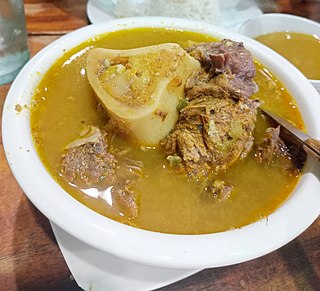
Iloilo, officially the Province of Iloilo, is a province in the Philippines located in the Western Visayas region. Its capital and largest city is Iloilo City, the regional center of Western Visayas. Iloilo occupies the southeast portion of the Visayan island of Panay and is bordered by the province of Antique to the west, Capiz to the north, the Jintotolo Channel to the northeast, the Guimaras Strait to the east, and the Iloilo Strait and Panay Gulf to the southwest.

Visayans or Visayan people are a Philippine ethnolinguistic family group or metaethnicity native to the Visayas, the southernmost islands of Luzon and a significant portion of Mindanao. They are composed of numerous distinct ethnic groups, many unrelated to each other. When taken as a single group, they number around 33.5 million. The Visayans, like the Luzon Lowlanders were originally predominantly animist-polytheists and broadly share a maritime culture until the 16th century when Catholicism was introduced by the Spanish empire. In more inland or otherwise secluded areas, ancient animistic-polytheistic beliefs and traditions either were reinterpreted within a Roman Catholic framework or syncretized with the new religion. Visayans are generally speakers of one or more of the distinct Bisayan languages, the most widely spoken being Cebuano, followed by Hiligaynon (Ilonggo) and Waray-Waray.

The Bisayan languages or Visayan languages are a subgroup of the Austronesian languages spoken in the Philippines. They are most closely related to Tagalog and the Bikol languages, all of which are part of the Central Philippine languages. Most Bisayan languages are spoken in the whole Visayas section of the country, but they are also spoken in the southern part of the Bicol Region, islands south of Luzon, such as those that make up Romblon, most of the areas of Mindanao and the province of Sulu located southwest of Mindanao. Some residents of Metro Manila also speak one of the Bisayan languages.

Iloilo City, officially the City of Iloilo, is a 1st class highly urbanized city in the Western Visayas region of the Philippines, located on the southeastern coast of the island of Panay. According to the 2020 census, Iloilo City has a population of 457,626 people, making it the most populous city in Western Visayas. For the metropolitan area, the total population is 1,007,945 people.

Barotac Nuevo, officially the Municipality of Barotac Nuevo, is a 2nd class municipality in the province of Iloilo, Philippines. According to the 2020 census, it has a population of 58,176 people.
The Hiligaynon people, often referred to as Ilonggo people or Panayan people, are the second largest subgroup of the larger Visayan ethnic group, whose primary language is Hiligaynon, an Austronesian language of the Visayan branch native to Panay, Guimaras, and Negros. They originated in the province of Iloilo, on the island of Panay, in the region of Western Visayas. Over the years, inter-migrations and intra-migrations have contributed to the diaspora of the Hiligaynon to different parts of the Philippines. Today, the Hiligaynon, apart from the province of Iloilo, also form the majority in the provinces of Guimaras, Negros Occidental, Capiz, South Cotabato, Sultan Kudarat, and North Cotabato.

Peter Solis Nery is a Filipino poet, fictionist, author, and filmmaker. Writing in Hiligaynon, he is a Carlos Palanca Memorial Awards for Literature Hall of Fame Awardee, the Cultural Center of the Philippines (CCP) Literary Grant, and the All-Western Visayas Literary Contest winner. In 2015, he became the first Filipino author to be invited to the Sharjah International Book Fair in the United Arab Emirates. Writing in English, Filipino, and Hiligaynon, he has authored at least 35 books, and has written screenplays. He wrote and edited newspapers in Iloilo City before becoming a nurse in the United States.
Hiligaynon is the leading Ilonggo weekly magazine published in the Philippines since 1934. It contains Ilonggo serialized novels, short stories, poetry, serialized comics, essays, news features, entertainment news and articles, and many others. Hiligaynon is named after one of the most predominantly spoken language amongst the people of Western Visayas and Soccsksargen region. Hiligaynon closed during the notorious Martial Law era, but was resurrected in 1989.
The Suludnon, also known as the Panay-Bukidnon, Pan-ayanon, or Tumandok, are a culturally indigenous Visayan group of people who reside in the Capiz-Antique-Iloilo mountainous area of Panay in the Visayan islands of the Philippines. They are one of the two only culturally indigenous group of Visayan language-speakers in the Western Visayas, along with the, Halawodnon of Lambunao and Calinog, Iloilo and Iraynon-Bukidnon of Antique. Also, they are part of the wider Visayan ethnolinguistic group, who constitute the largest Filipino ethnolinguistic group.

The Central Philippine University College of Law, also referred to as CPU COL, CPU College of Law or CPU Law, is the law school and one of the academic units of Central Philippine University, a private university in Iloilo City, Philippines. Established in 1939, the CPU College of Law is one of the leading law schools in the country in terms of bar exam performance, alumni it produces and linkages. In 2012, the Juris Doctor (JD) replaced the Bachelor of Laws (LLB), making it as the first law school to offer such program approved by legal education board of the Philippines.

Peter’s Prize or The Peter Solis Nery Prize for Excellence in Hiligaynon Writing is a literary contest in the Hiligaynon language of the Philippines established by The Peter Solis Nery Foundation for Hiligaynon Literature and the Arts, Inc. in 2013 to fulfill its mission to promote, preserve, and propagate Hiligaynon literature. It was expanded to special prizes for excellence in literary scholarship and cultural work, and additional competitive prizes in the various art forms in its succeeding years. It was named after foremost Hiligaynon (Ilonggo) writer Peter Solis Nery from Dumangas, Iloilo.

Capiznon or Capiceño is an Austronesian regional language spoken in Western Visayas in the Philippines. Capiznon is concentrated in the province of Capiz in the northeast of Panay Island. It is a member of the Bisayan language family and the people are part of the wider Visayan ethnolinguistic group, who constitute the largest Filipino ethnolinguistic group. The language is often confused with Hiligaynon due to dialectological comprehension similarities and as high as 91% mutual intelligibility, but it has its certain unique accent and vocabulary that integrates Aklanon and Waray lexicon. Despite its distinct corruption of Hiligaynon lateral approximants, a prevalent feature among rural farmers, ethnic convergence and cosmopolitanism has led to a shift back to the purely Hiligaynon prosodic form of slower tonality and softer and longer vowels most particularly among the younger generations.

The Karay-a language is an Austronesian regional language in the Philippines spoken by the Karay-a people, mainly in Antique.

Hiligaynon, also often referred to as Ilonggo or Binisayâ/Bisayâ nga Hiniligaynon/Inilonggo, is an Austronesian regional language spoken in the Philippines by about 9.1 million people, predominantly in Western Visayas, Negros Island Region, and Soccsksargen, most of whom belong to the Hiligaynon people. It is the second-most widely spoken language in the Visayas and belongs to the Bisayan languages, and it is more distantly related to other Philippine languages.

Pancit Molo or Filipino pork dumpling soup, is a type of soup using wonton wrappers which originated from Molo district in Iloilo City, Philippines. It consists of a mixture of ground pork wrapped in molo or wonton wrapper, shredded chicken meat, and also shrimp. The piping-hot soup is often ladled into serving bowls, and garnished with green onions and fried garlic bits for another layer of flavor. Pancit, which loosely translates to "noodle" is a common cuisine in the Philippines. The "noodle" acting in this dish comes from the wonton wrappers added to this dish, which draws from Chinese cuisine. Under this influence, the wontons within the soup have been compared to "siomai dumplings."

Asín tibuók is a rare Filipino artisanal sea salt from the Boholano people made from filtering seawater through ashes. A related artisanal salt is known as túltul or dúkdok among the Ilonggo people. It is made similarly to asín tibuók but is boiled with gatâ.
Hiligaynon literature consists of both the oral and written works in Hiligaynon, the language of the Hiligaynon people in the Philippine regions of Western Visayas and Soccsksargen.

Cansí is a Filipino beef soup originating from Iloilo which is spread across the rest of the Western Visayas region. It is made with beef shank and bone marrow boiled until gelatinous. It is uniquely slightly soured with fruits like batuan or bilimbi. Cansi is usually cooked with unripe breadfruit or jackfruit, lemongrass, tomatoes, garlic, onions, fish sauce, and siling haba or labuyo peppers. The soup is usually orange in color due to the use of annatto seeds (atsuete). It is also sometimes called "sinigang na bulalo" in Tagalog regions, due to its similarity to sinigang and bulalo.
Ramon Muzones was a writer and lawyer and the posthumous recipient of the National Artist of the Philippines for Literature award in the Philippines in 2018. He wrote in Hiligaynon and popularized Hiligaynon literature.
Mandurriao Plaza, formally known as Serapion C. Torre Park, is a public plaza and urban park in Mandurriao district in Iloilo City, Philippines. It is one of the six district plazas in Iloilo City.













